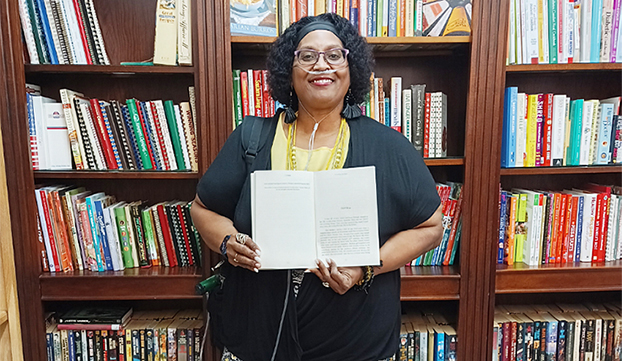The Civil War and East Texas
Published 3:35 pm Wednesday, September 7, 2016
By Robbie Scifres
Texas Historical Press
On October 4, 1862, after the Battle of the Port of Galveston, Yankee ships blockaded all the ports on the Gulf Coast and patrolled the Gulf waters as well. Cotton and tobacco exports from upriver and the supplies to East Texas quickly trickled to nearly nothing. The Yankees blocked the rivers and all shipping on the Angelina and the Neches Rivers ceased. Heading to war, men left East Texas overland by the hundreds. The women remained to do their best for themselves, their children and slaves. The Yankees made sure that nothing went out that would aid the Confederacy and likewise nothing came in to East Texas to aid citizens and Southern Soldiers; commerce ground to a halt.
In desperation a plan was put in place to haul East Texas cotton overland west, along the old El Camino de los Tejas Road, cut down below Galveston and load the bales onto fast running schooners from a deserted beach. If the crew of the blockade runner had been lucky enough to find a cargo to bring in, then women might have been lucky enough to find sugar, coffee or other supplies they could not grow on their own. This was done with some success.
Happily, Galveston was recovered by the Southern forces on New Year’s Day, 1863, in another battle. Even though the Yankee blockade out in the Gulf of Mexico continued, Galveston remained in Confederate hands. A little known fact is that when the Civil War ended Galveston was the only Confederate port that was not in the hands of the Yankees. The blue coats tried to do what they could to keep supplies from coming into Texas; but the Gulf of Mexico is very large. All ships were stopped and searched and cargoes confiscated by the Yankees. The ships became U.S. property and any slaves in the crews were freed. This was all done in the hopes of stopping these Texans from running the blockades. With ships, goods and men being captured regularly, the country folk up and down the Angelina and Neches Rivers feared they would be occupied by the Yankee soldiers.
In September of 1863, three Yankee ships loaded with three hundred federal troops headed out from New Orleans for Sabine Pass. Their goal was to take it, close it and control the coast road to Galveston by closing all commerce to East Texas and opening an invasion artery up the rivers. At the pass a little fort with only a few mounds of dirt looking out on the river had been erected by the Confederates and called Fort Griffin. On September 7th the Federal gunboats arrived at their destination and it would be short work for them to capture this “fort”; or so they thought. However, an Irish Lieutenant of the now famous name of “Dick” Dowling, directed his little twenty-five man company from Houston to fire upon the Yankee ships with their three hundred men. Within forty-five minutes, one Yankee gunboat was disabled, one had been forced aground and all three with their three hundred men surrendered to the Commander of the fort, Lieutenant Dowling. Much to the relief of the East Texans, Dowling and his men had kept the war from their cabin doors.
Another attempt was made by General Banks of the Union to enter East Texas through Mansfield, Louisiana by using the Red River. His gunboats and soldiers were met by volunteer units from the East Texas towns and the Yankees were defeated before ever leaving Mansfield. The Texans had thwarted the advances of the Union Army from both directions; upriver from the Gulf of Mexico and from the east via the Red River. The backwoodsman of East Texas had saved the day.
In spite of their heroic efforts the South surrendered to the North and the war was over. After the war Texas suffered the same fate as the other Southern states; occupation by the Union Army and Reconstruction. The new Union Commander over the Department of Texas was none other than Lieutenant Colonel George Custer. Known for his reckless exploits during the Civil War, he and a small company of Yankees occupied the area down river at Jasper, Texas. They pitched their tents outside the town. There were other Yankee detachments in other East Texas towns including Nacogdoches. Later when Custer’s command was moved further south to Austin, Texas he became known for his Sunday afternoon horse races. Nacogdoches was chosen for a Yankee hospital located on the northeast corner of present University Drive and East Main at the foot of Orton Hill.
These soldiers were under orders to respect the citizens and as a rule, they did. However, those weary East Texas soldiers who had fought the war and escaped death had returned. Some were bitter but all were glad the nightmare was over. The fact that these “damn Yankees” were in their midst as occupiers incensed them and caused bouts of hatred to spew forth. Attacks were occasionally made on the Yankee’s tents by filling them with bullet holes. While stationed at Nacogdoches, yellow fever broke out among them; sixteen soldiers lay buried at Old North Cemetery, north of Nacogdoches. The remainder were transferred to other areas.
The information for this article was taken from TALES OF OLD, OLD EAST TEXAS, by Dr. H. Gordon Pettey and are the property of Texas Historical Press.
Any and all questions and comments are welcome. I answer the phone from 9:00 a.m. to 9:00 P.M. mountain time. Catalogues, books and copies of articles must be purchased through the U.S. Mail. Allow six to eight weeks for delivery. Call Robbie Scifres 575-291-9918, I am always glad to hear from you.





